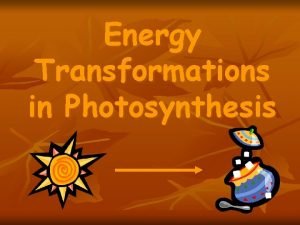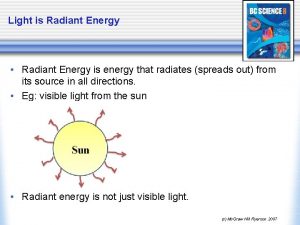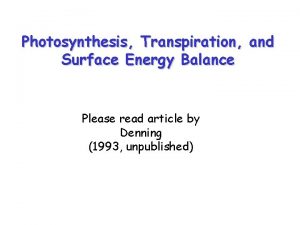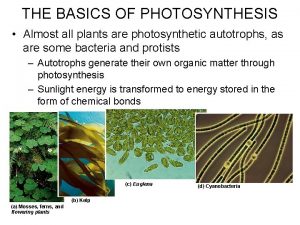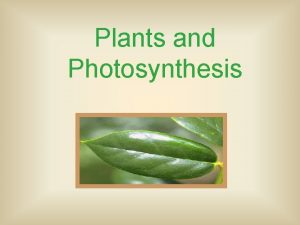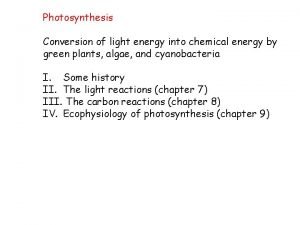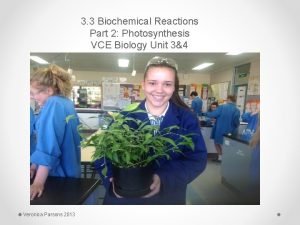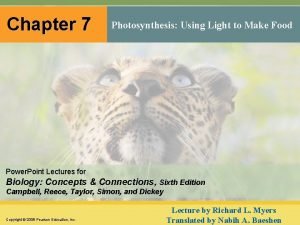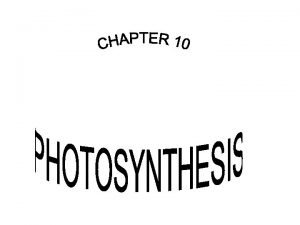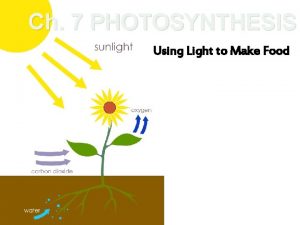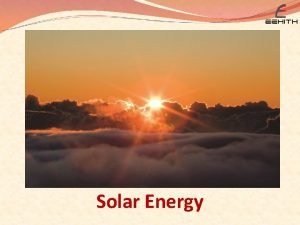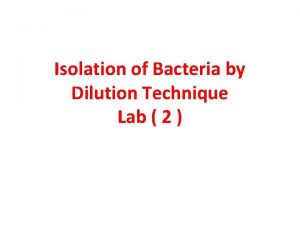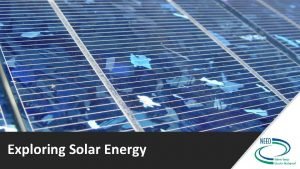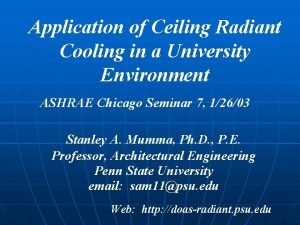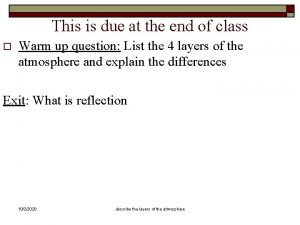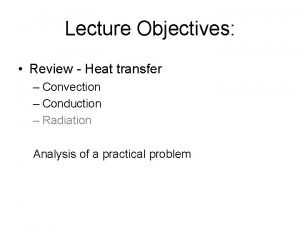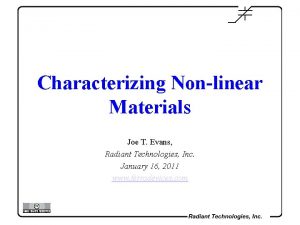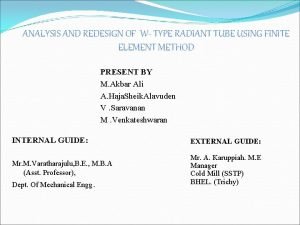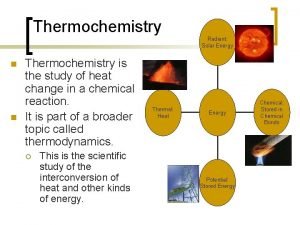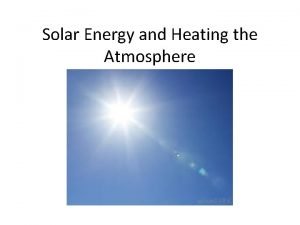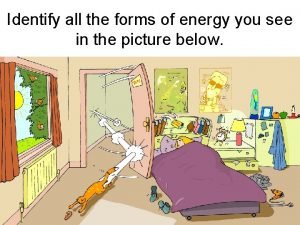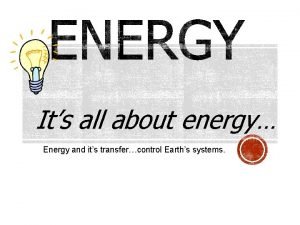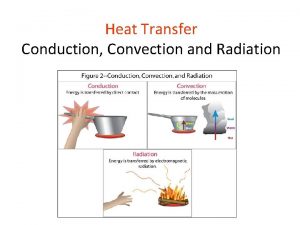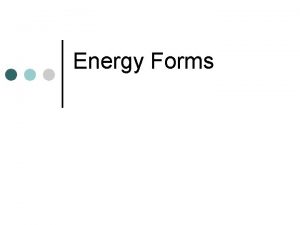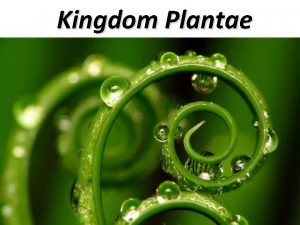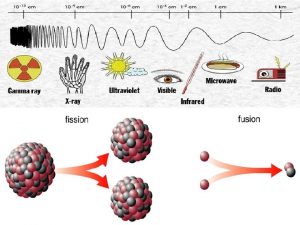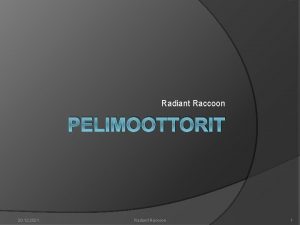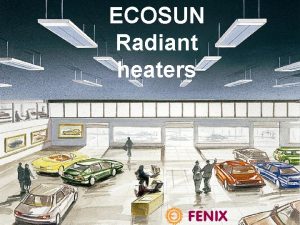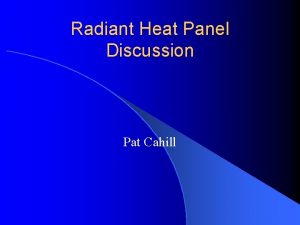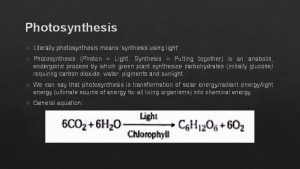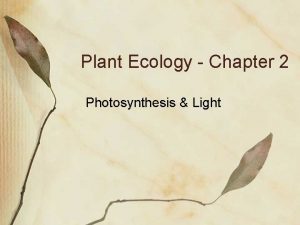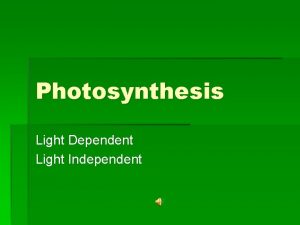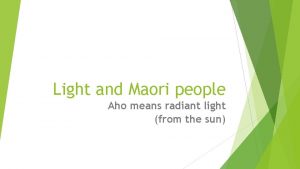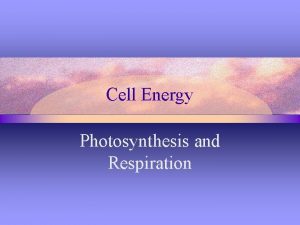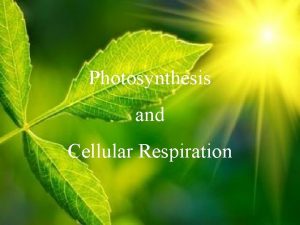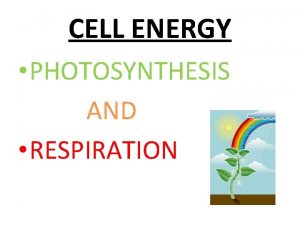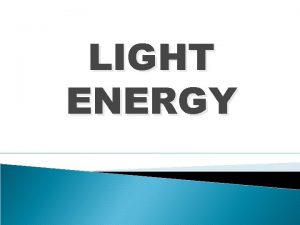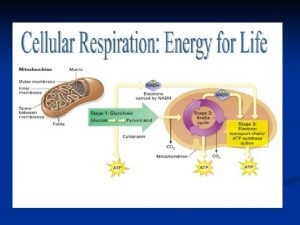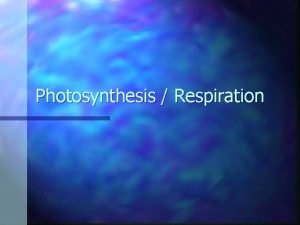Ch 2 Light and Photosynthesis Ps Light Radiant








































- Slides: 40

Ch. 2 Light and Photosynthesis (Ps)

Light • Radiant energy (electromagnetic radiation) – Particle + wave • Particle: torp

Light • Wave: has • Wavelength inversely

Light • Visible light: 380 -750 nanometers (nm) (nano=10 -9)

Electromagnetic spectrum • T/F: Plants green because chlorophyll absorbs green light

Electromagnetic spectrum • 400 -700 nm: Photosynthetically Active Radiation (PAR) – Drives Ps – Green least (why leaves green) Action spectrum for photosynthesis (Ps)

Radiation • • Helps determine IR: 750 -106 nm. Objects > absolute 0 emit Gain energy from IR too Pred

IR • “Infrared (IR) window” of leaves • Transmit near IR (beyond visible): little • Most visible IR window

IR • Near IR transmitted through leaves (dashed line)

IR • Use IR window (sense overstory)? ? • First: phytochrome

Phytochrome • 2 forms (interconvertible) • Pr absorbs R: converted to Pfr • Pfr absorbs FR (near IR): converted to Pr • Pfr active

IR • 1) Ratio Pr: Pfr depends on ratio R: FR light • 2) R: FR influenced by leaves – Leaves remove R, let FR through “IR window”

IR • Ex, red alder (Alnus rubra) • Germination sensitive to Pfr – Pfr high: – Pfr low:

IR • Ex, red alder (Alnus rubra) • In open: lots R light, lots Pfr

IR • Ex, red alder (Alnus rubra) • Under canopy: lots FR light, less Pfr

IR • Plants may use phytochrome – 1) shaded: stimulate etiolation (spindly, less chlorophyll) – 2) info on canopy (deciduous forest) Trillium

Electromagnetic spectrum • UV radiation: < 350 nm (to 1 nm)

UV • Danger: Damage DNA (skin cancer!) • Pigments (ex, flavonoids) absorb • +DNA repair mechanisms Diamorpha smallii

Units (Intensity) • ?

Units

Units • PAR: Photosynthetic Photon Flux Density (PPFD) • moles photons/sq. m/sec National Mole Day? ?

Units PPFD • 1 mole photons = 1 Einstein • So, Einsteins/sq. m/sec National Mole Day? ?

Light intensity variation • Canopies patchy in

Light intensity variation • Phenoseason: seasonal light change + canopy change Max. lite canopy top Max. lite ground level

Phenoseasons • Ex, Eastern Deciduous Forest understory plants • 4 strategies: • 1) Spring herbs (“Ea”): emerge early Canopy leaf expansion Canopy leaf drop

Spring herbs Ex, Trillium

Spring herbs Ex, Erythronium (trout lily)

2. Summer green herbs • Emerge late spring, green summer, dormant fall • “Us” Canopy leaf drop Canopy leaf expansion

Summer green herbs • Ex, Uvularia sessilifolia (bellwort) Uvula? ?

Summer green herbs • Ex, Uvularia sessilifolia (bellwort)

3. Late-summer herbs • Emerge summer, get early fall sun (Aa) • Ex, Aster acuminatus (sharp-leaved aster) Canopy leaf drop Canopy leaf expansion

4. Semievergreens • Emerge late spring, green late: “Om” • Ex, Oxalis montana (wood sorrel) Canopy leaf drop Canopy leaf expansion

Light variation • Canopies patchy • Question: Technical name for beam sunlight on forest floor?

Light variation • Canopies patchy in space • ______: beam sunlight on forest floor

Sunflecks: Good • Useful (forest floor plants) – Some: 70% energy sunflecks

Sunflecks: Good • Useful (forest floor plants) – Some: 70% energy sunflecks • Ability to use: – Spring herbs (Trillium) respond – Summer green herbs (Uvularia) exploit

Sunflecks: Bad – Ex: shade-adapted Oxalis. Redwood forest (Oxalis oregana-redwood sorrel) – Coast redwood (Sequoia sempervirens) • Tallest tree: 368 ft. DBH 23 ft. !

Sunflecks: Bad • O. oregana: Sunflecks damage Ps machinery

Sunflecks: Bad • Sunflecks & drought stress • Ex, regeneration Abies magnifica (CA red fir)

Sunflecks • Ex, regeneration Abies magnifica (CA red fir) • Seedling pattern from sunfleck pattern
 Radiant energy transformation
Radiant energy transformation Solar energy is radiant light and heat
Solar energy is radiant light and heat Radiant vs light energy
Radiant vs light energy Chlorophyll structure
Chlorophyll structure Light light light chapter 23
Light light light chapter 23 Into the light chapter 22
Into the light chapter 22 Chapter 22
Chapter 22 Inputs of light reactions in photosynthesis
Inputs of light reactions in photosynthesis Autotroph
Autotroph Chemical form of energy
Chemical form of energy How to measure photosynthesis
How to measure photosynthesis The process of photosynthesis
The process of photosynthesis Light reaction of photosynthesis
Light reaction of photosynthesis Photosynthesis transforms light energy into chemical energy
Photosynthesis transforms light energy into chemical energy Is photosynthesis a redox reaction
Is photosynthesis a redox reaction Radiant energy
Radiant energy Resuscitaire working principle
Resuscitaire working principle Radiant streak method
Radiant streak method Radiant streak plate
Radiant streak plate Advantages of solar
Advantages of solar Solar energy nuclear fusion
Solar energy nuclear fusion Equation for efficiency
Equation for efficiency What are radiant points for
What are radiant points for Radiant logic ldap
Radiant logic ldap Means to cook from radiant heat from above.
Means to cook from radiant heat from above. Hybrid radiant doas
Hybrid radiant doas Radiant energy
Radiant energy Latent loads in radiant cooling
Latent loads in radiant cooling Objectives of heat transfer
Objectives of heat transfer Radiant panel test
Radiant panel test Radiant floor heat exchanger
Radiant floor heat exchanger Radiant ferroelectric testing
Radiant ferroelectric testing W-type radiant tubes
W-type radiant tubes Balanced thermochemical equation
Balanced thermochemical equation Radiant energy
Radiant energy Energy transformation worksheet doc
Energy transformation worksheet doc Radiant city
Radiant city Radiant impressions custom breast prosthesis
Radiant impressions custom breast prosthesis It is a form of energy that travels through space
It is a form of energy that travels through space Sample of radiation
Sample of radiation What is energy in science
What is energy in science
